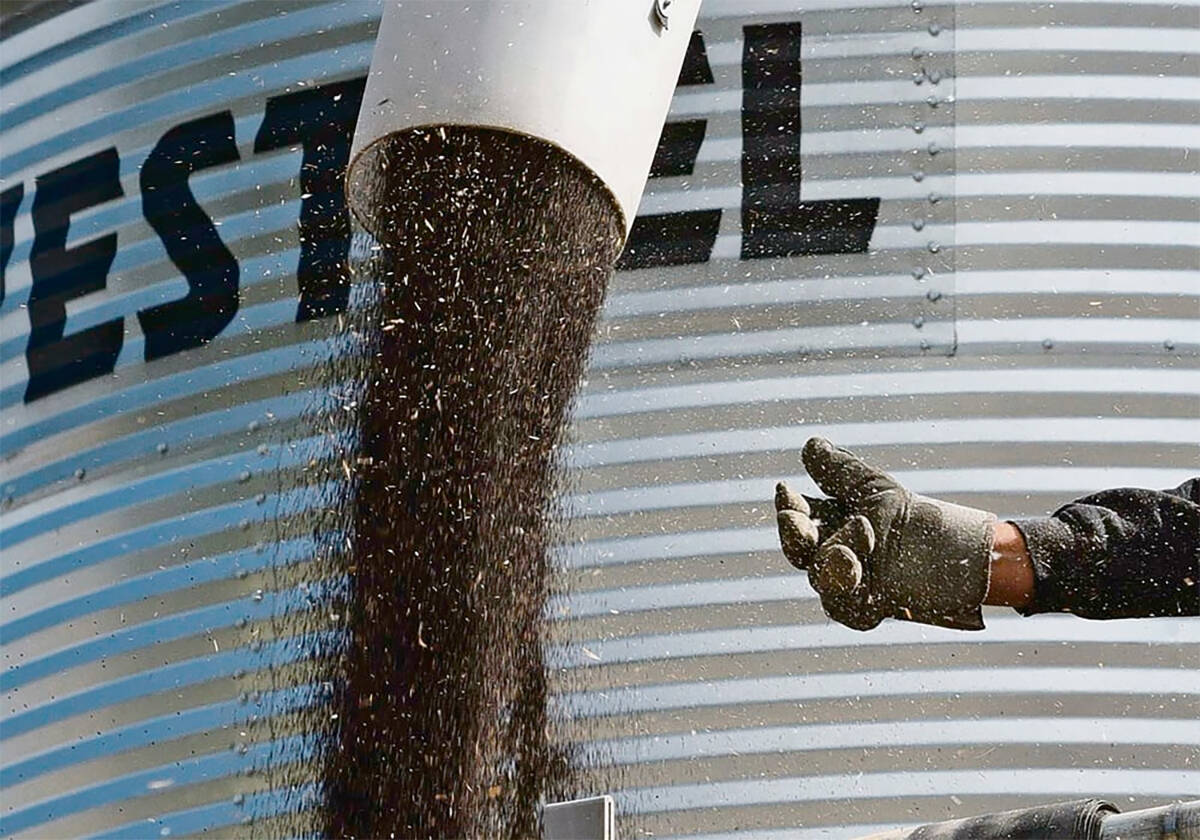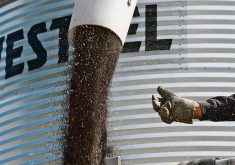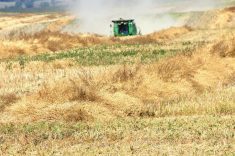Canadian dairy farmers are facing production quota cuts and an end to annual support price increases that have raised dairy prices by as much as 17 percent in the past four years, says Ottawa’s top dairy industry regulator.
And Canadian Dairy Commission chair John Core told the Dairy Farmers of Canada annual policy meeting two weeks ago that price increases in the past four years likely have caused some of the decline in Canadian demand for dairy products as consumers moved to competitors such as juice and soy products.
Read Also

Farmers urged to be grain-safe this fall
Working around grain bins comes with risk, from farmers falling to drowning in grain: Experts have five tips to help avoid grain-related accidents this harvest.
“It is fair to reflect that given the price increases over the last four years, as an industry we needed to expect a softening in the market,” said Core, a former DFC president.
He now heads the federal crown corporation that establishes skim milk powder and butter support prices each year that set the trend for provincially established table milk (fluid) prices.
Production quotas have fallen by more than four percent with the prospect of more cuts on the horizon.
There is a connection between price and market demand, Core told the farmer representatives. “Some of you disagree with that but I think it is a reality.”
Core was stepping into a debate that typically divides dairy farmers from processors and retail customers.
Dairy farmers insist that despite higher farmgate prices in Canada than in the United States, retail prices are no higher and often are lower.
Dairy processors and end-users insist predictable annual price increases discourage consumption and new product innovation while encouraging imports of cheaper dairy substitute products.
The last four years have seen unusually large support price increases, including more than two percent on Feb. 1.
In 2002, after years of complaints from farmers that prices were falling below costs, the CDC promised to increase prices enough to ensure that by 2006, at least 50 percent of dairy farmers would be receiving their full cost of production from the marketplace.
During those four years, BSE also struck, costing the industry hundreds of millions of dollars, adding to the price increases.
In addition, there was the end of a government dairy subsidy phase out policy that was supposed to be covered from market returns.
The result was dairy support price increases for skim milk powder over the past four years that processors said were unreasonable, more than double the rate of inflation.
Core said the CDC now thinks it has fulfilled its 2002 promise. Price increases will revert to being closer to inflation.
He also noted that the entire system of setting CDC dairy support prices must be reviewed and redesigned during the next year, although a promised permanent replacement for the current pricing system cannot be devised until World Trade Organization talks are completed.
A deal that reduces Canada’s ability to offer production-distorting supports would limit the CDC’s ability to set minimum support prices. A deal to eliminate export subsidies would virtually end dairy exports at world prices lower than domestic prices, forcing a production cut of up to six percent.
DFC chair Jacques Laforge said in a later interview that Core always is torn on pricing decisions between farmer demands for higher prices and user demands for restraint.
The New Brunswick dairy farmer said he does not accept the connection Core drew between higher prices and weaker consumer demand.
He said the CDC chair simply was setting the stage for expected lower price increases in 2007.
“John is already positioning himself for next year.”














